What is oil?
Oil is a type of fat you can use cooking. Oil is derived from many different plants, nuts, and seeds. Depending on their source, oils can vary in color from translucent with a light golden tone to a rich golden amber color. Oils are thick and more viscous in consistency than water, with a slippery texture to the touch.
There are many different types of oils you can use in the kitchen. Oils all have different flavors and smoke points (the temperature where they start to burn,) so each oil has its place in different recipes and food preparations.
What are the different types of oils?
Olive Oil
Olive oil is one of the most common varieties of cooking oils. It is categorized into two types; extra virgin olive oil, and light olive oil. This oil is minimally processed and is a dark gold color. Extra Virgin Olive Oil has a distinct olive flavor, and can sometimes have some sharp peppery notes. This oil has a lower smoke point at 350 degrees, making it ideal in low heat applications or as a dressing.
Light olive oil has a much lighter flavor than the Extra Virgin and can withstand heat a bit better. It has a smoke point of 470 degrees, making it much better for high heat cooking like roasting and sauteeing.
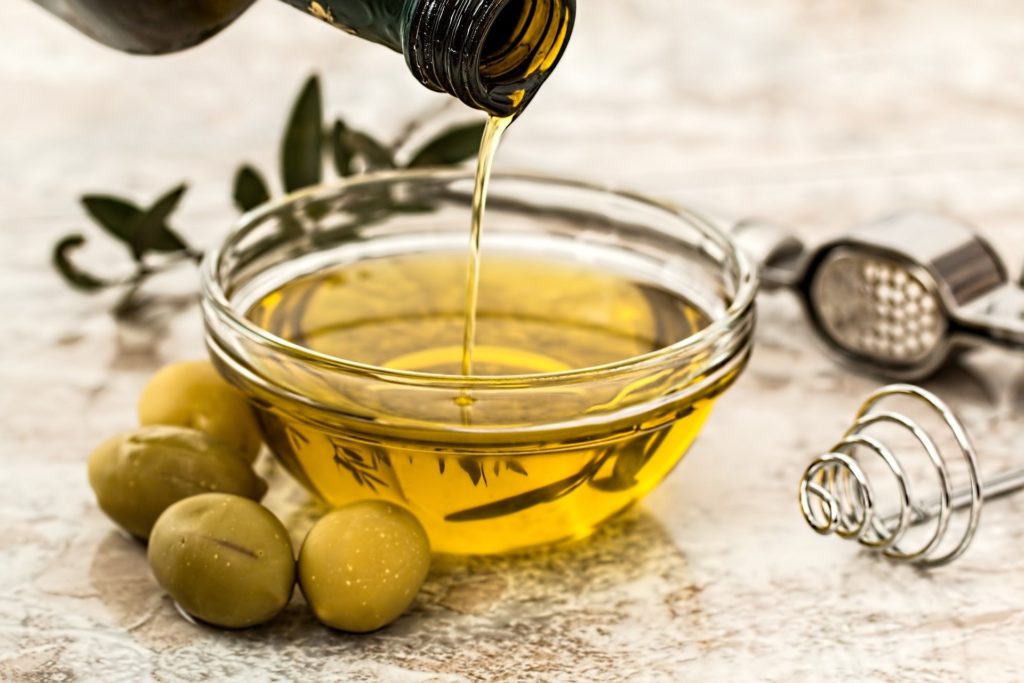
Olive oil is made by crushing olives under a lot of pressure, allowing the oil to be extracted from the oil.
Avocado Oil
Avocado oil has the highest smoke point of any oil, making it a great oil for high heat applications like roasting and frying. There are two varieties – refined and unrefined. Refined oil has a much lighter flavor than its unrefined counterpart.
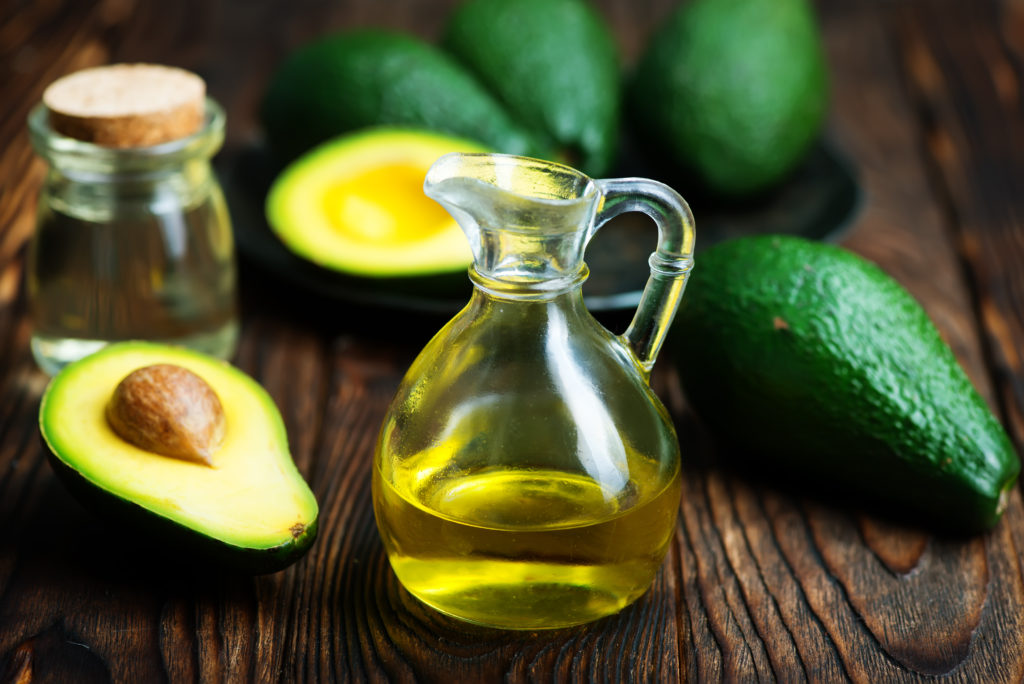
Avocado Oil in a bottle.
Coconut Oil
Coconut oil is extracted from the meat of the coconut and is sold in glass jars. At room temperature, the oil is white and in solid form, and melts to a translucent oil when heat is applied. There are two types of coconut oil, unrefined and refined. Unrefined coconut oil has a stronger coconut flavor while refined coconut oil has a more neutral taste. This oil is great for high heat cooking lie baking, roasting, and sauteeing – but keep in mind that it may impart some coconut flavor into your food.
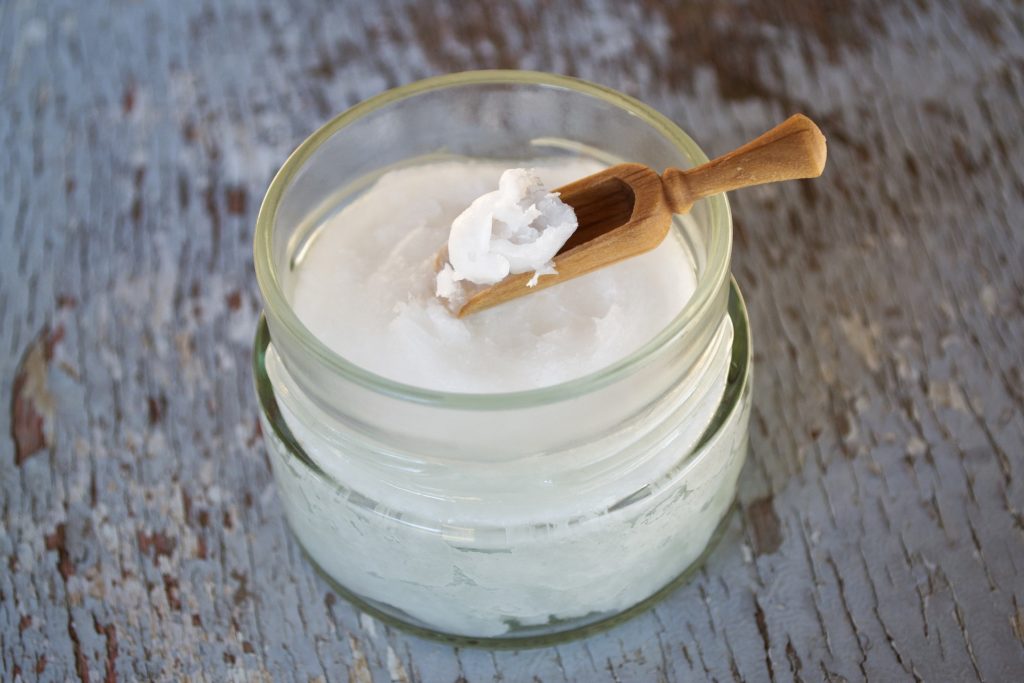
At room temperature, coconut oil is solid and white, but when it melts, it turns translucent.
Canola Oil / Vegetable Oil
These two oils are made by manipulating rapeseed plants (canola) or a blend of vegetables physically or chemically to extract their oils. While these oils may contain additional chemicals, they are less expensive to produce and have a very neutral flavor. Its mild flavor and medium smoke point make these oils great for many different things like frying, baking, and grilling.
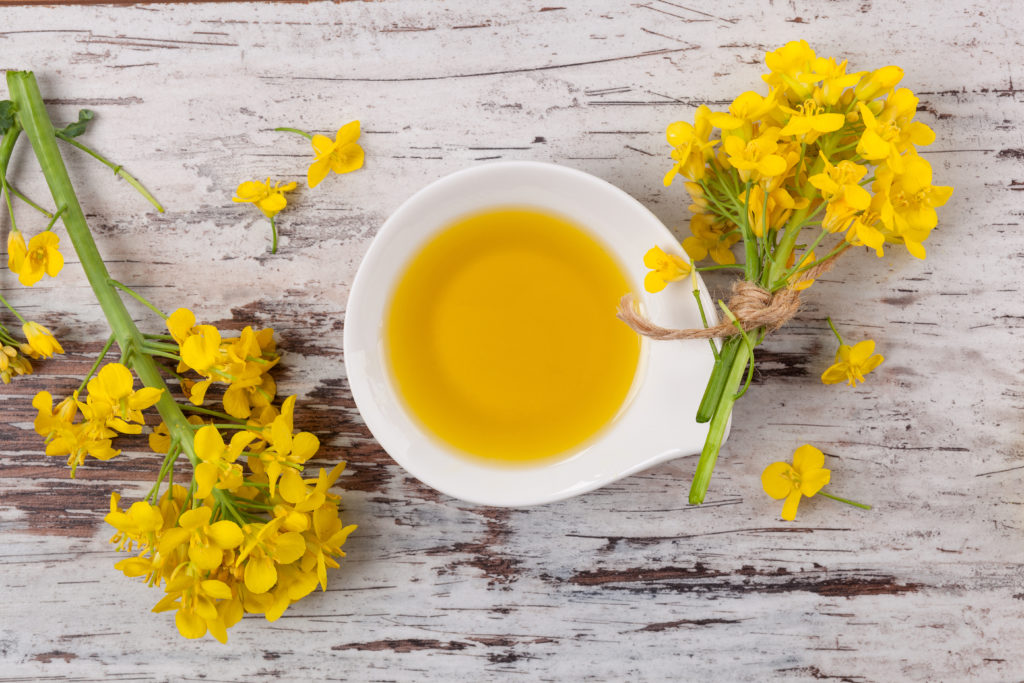
Canola oil, also known as rapeseed oil, is make from these plants, called rapeseed flowers.
There are many other different types of oils, but the ones above are the ones most commonly used in our recipes.
What are some ways to use oil?
Oils serve both a functional and culinary purpose in the kitchen. Oils prevent food from sticking to cooking surfaces like pots, pans, and baking sheets while providing richness and flavor. You can use a small amount of oil to saute vegetables or pan-fry, or you can completely submerge food in hot oil to deep fry foods, like when making french fries. You can also combine oil with acids like lemon juice or vinegar and seasoning to make dressings for salads.
Where can you buy oil?
You can find the most common variety of oils at most grocery stores, either in the baking aisle or near the prepackaged salad dressings.
How should you store oil?
Most oils are packaged in appropriate containers for storage and are to be kept in a cool, dry place.
Fun Fact About Oil
The word oil comes from the Arabic word “az-zait,” which means juice of olives.
Did you know?
Oil can be made up of three types of fats: unsaturated, saturated, and trans-fats. Unsaturated fats are healthy fats that help to improve heart health. Saturated fats are solid at room temperature and should be eaten in moderation due to their link to an increased risk of high cholesterol and heart disease. Trans-fats should be avoided entirely.
Our Recipes Using Oil
Rolled Taquitos
In our rolled taquitos recipe, we use olive oil to brush on the tortillas before we roll the tacos and bake them in the oven, which helps to make them crispy.
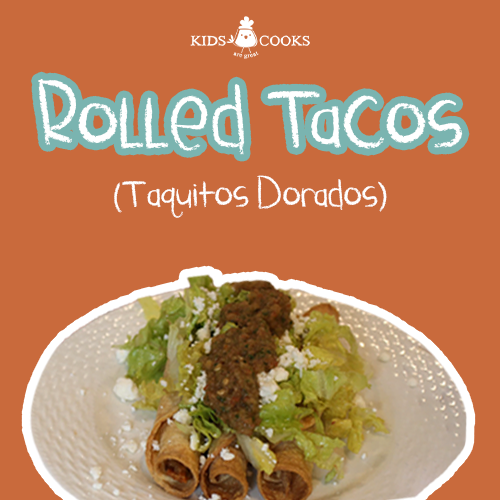
Bunuelos
In our bunuelos recipe, Chef Sydney uses vegetable oil to fry bunuelos. This is a great oil for this because it allows the bunuelos to get crispy and has a mild, delicate flavor that doesn’t overpower the cinnamon-sugar coating.
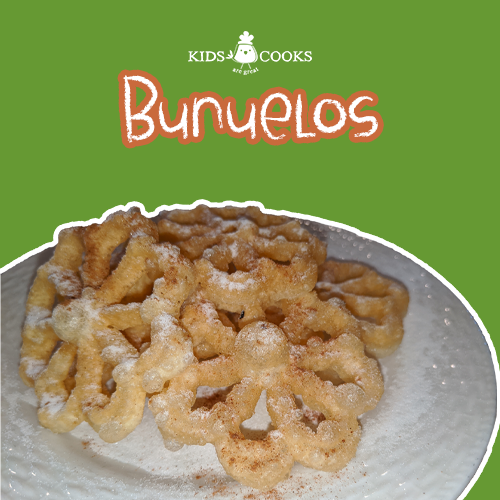
Other Recipes Using Oil
Italian Vinaigrette
To make this homemade Italian Dressing, combine minced garlic with red wine vinegar, lemon juice, dried oregano, dijon mustard, sugar, salt, and pepper in a bowl. Slowly drizzle in olive oil and whisk vigorously until the oil and vinegar emulsify, or combine. The dressing will look creamy. Pour it over a simple salad with lettuce, cherry tomatoes, and croutons.
No Bake Oatmeal Cookies
To make these cookies, start by heating sugar, almond milk, cocoa powder, and coconut oil in a saucepan and bring it to a boil. Remove from heat and add in shredded coconut, rolled oats, peanut butter, vanilla extract, and salt. Stir this together to make a dough. Make small balls of this dough and them place on a baking sheet lined with parchment paper. Let the cookies sit for 25 minutes at room temperature before enjoying.


